Blog: Synchronisation fundamentals for digital communication systems

Synchronisation is fundamental to most coordinated activities, from a performance by a symphony orchestra or ballet company to digital communications. Digital communication involves sending data from a source and recovering it at the destination. Firstly, the data transmitted from the source should be recovered without error at the receiver and, secondly, the source should be received at the destination. Synchronisation between the sender and the receiver makes these two things possible. This blog article explains the various types of synchronisation in digital communication systems.
Bit Synchronisation
Synchronisation within a communications system is accomplished using a standard clock. Such a form of synchronisation can be viewed as ‘bit synchronisation’. One edge of the clock sends the data out of the transmitter and a delayed edge of the clock receives the data at the destination. The two edges could be the rising and falling edge of the same clock. The following figure outlines the various delays involved in digital interface data transmission. A common clock driving the two interfaces with certain quality to accommodate the requirements can satisfy such systems' clocking and synchronisation requirements.
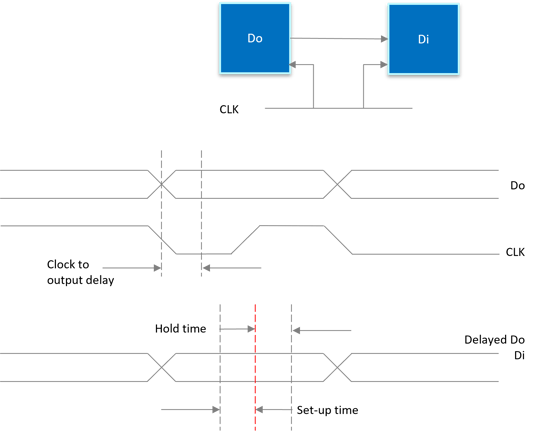
The key clocking issue with digital interfaces is the clock edge variation, typically called jitter. Jitter is the fast movement of the clock edges that might erroneously cause sampling of the wrong digital state. Interfaces define the maximum acceptable variation for a particular speed of the interface. In an eye diagram, the horizontal width depends on the signal crossings. Horizontal width provides an adequate measure of the clocking variations that happen in the system. This is an immediate measure of the clock's performance that drives the interface. In many scenarios, the RMS value of the clock jitter within a particular frequency band is specified to achieve a certain level of bit error rate.
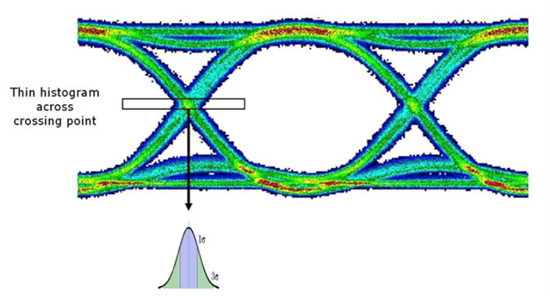
Reference 1
Frame Synchronisation
‘Frame synchronisation’ deals with determining the start and end of code words or groups of words to differentiate frames from the raw stream of received bits. This is possible with a state machine at the receiver continuously looking for a repeated pattern of particular series of bits and determining the frame boundaries. For the time-division multiplexing schemes, frame synchronisation is critical.

Network synchronisation is about the clocks across multiple pieces of equipment. Transmit clock signals get embedded into the data signals for communication across physically separated systems. Line coding systems transfer the signals to suit the physical layer transmission media and encode the clock into the signal. A clock recovery mechanism extracts and cleans up the clock at the receiver. The extracted clock ensures that the data is sampled in the correct intervals and stored in receive buffer for the system to use. The extracted clock is based on the rate at which data is received by the system and may be different from the local system clock.

Invariably, the physical layer transceivers implement incoming buffer storage to accommodate the variation of remote transmission rate with the destination reception rate. The size of this buffer is designed to accommodate the maximum deviation between the translate clock and receive block within a certain period. If the transmit and receive clocks are consistently deviating for a certain period, then blocks of data may be repeated or lost. The primary idea of synchronisation is to ensure that all participating elements have the same average frequency.

Network synchronisation methods
Multiple methods may be used to achieve network synchronisation.
Atomic clocks
Atomic clocks generate their clicks based on the transition times of atoms and are supposed to be very accurate. Such deployment can have atomic clocks in at all individual network elements. The accuracy of all the clocks is within certain limits for a defined period. The underlying communication system can use the accuracy limits to perform error communication. Such systems can be expensive compared to other transport-based synchronisation systems.
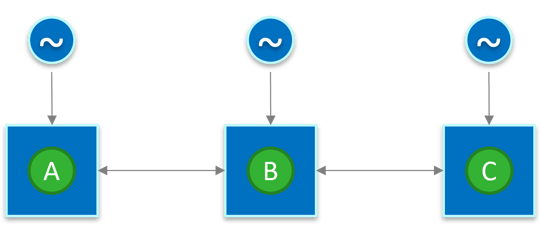
GNSS Signals
Global Navigation Sattelite Systems provide accurate timing when enough signals are available to decode them. GNSS signals are ubiquitously available. Primary reference traceability can be directly brought into a system by applying GNSS solutions.
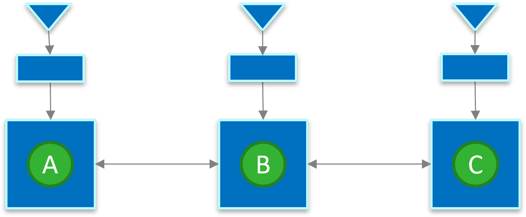
Physical layer synchronisation
Physical layer synchronisation is a standard method to bring frequency synchronisation to a network of systems. Traditional digital transport systems and state-of-the-art packet transport systems use physical layer clock recovery as a fundamental method to have reliable synchronisation.
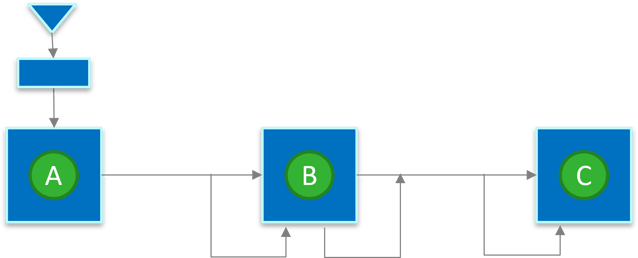
The extracted clock from the physical layer is sent to a phase-locked loop system to remove clock variations for physical synchronisation. Essentially the local reference clock in the system is steered by the clocking information from the network, making the system traceable to a primary clock. The quality of the local reference clock depends on the cleaning up needed for the received clock and other stability requirements such as holdover. Holdover is the ability to continue to provide a clock of a certain quality when all the network references are lost. 
Packet-based synchronisation
Packet-based synchronisation works in the protocol layer. Physical clocks are encoded into timestamps and Embedded in the packets. The synchronisation packets are exchanged through a protocol mechanism between the source and destination. The destination runs a servo mechanism am to recover the clock and convert it into physical form. Packet-based clocks are bidirectional and support frequency synchronisation and phase and time alignment.
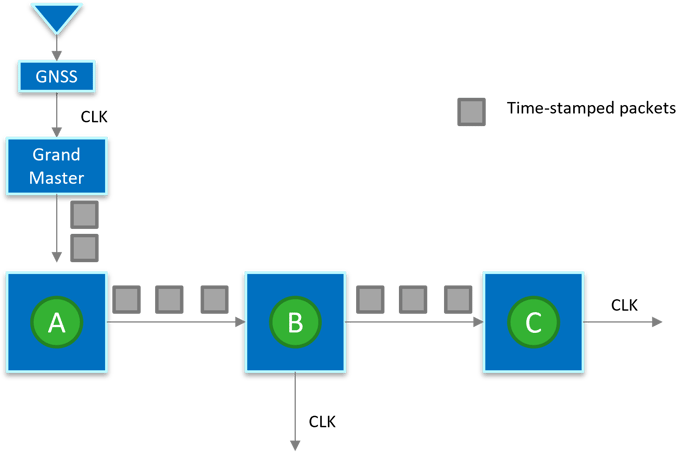
With packet-based clocks, each node timestamps the packet as it enters the system, continuously compares it with the remote timestamp and steers the local clock to match the remote clock. In many implementation examples, the packet clock is combined with the physical layer clock to take advantage of the long-term frequency accuracy of the physical layer clock.

Conclusion
Good synchronisation ensures error-free and efficient transmission of data and is critical in digital communication. Synchronisation can happen at various levels, using atomic clocks, GNSS signals, physical layer synchronisation or packet-based synchronisation.
If you want to know more about the best clocks for various types of synchronisation methods, contact us.
References
1. https://rintintin.colorado.edu/~gifford/5830-AWL/Anritsu%20Eye%20Diagram.pdf
Would you like more content like this delivered to your inbox?
Subscribe to our emails now!